What is the AI pierced when generating human faces?
- Transfer
In 2014, machine learning researcher Ian Goodfellow came up with the idea of generative adversarial networks or GAN. “Generativeness” is that the result of their work is images, not input evaluation (like “hot dog or not”), but “contention” is that two neural networks play cat and mouse like feds with counterfeiters : one neuronet tries to fool the other by creating realistic images, and the second one tries to distinguish the fake.
The first images of the GAN were easy to identify. Look at these 2014 faces .

“Teaching without a teacher with deep convolutional generative competitive networks” (2014), Radford and others. Also known as DCGAN
But the last generated faces from October 2017 are already harder to identify.
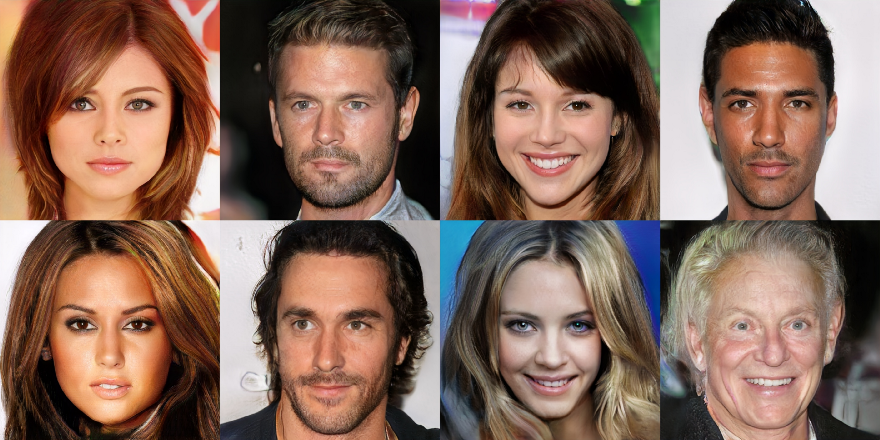
“Progressive cultivation of GANs to improve quality, stability, and diversity” (2017), Karras et al. Also known as PGAN or ProGAN.
Here are some signs of the images that GAN generated. Focus on faces, because they are a common testing ground for researchers, and many of the most noticeable artifacts appear in other types of images.
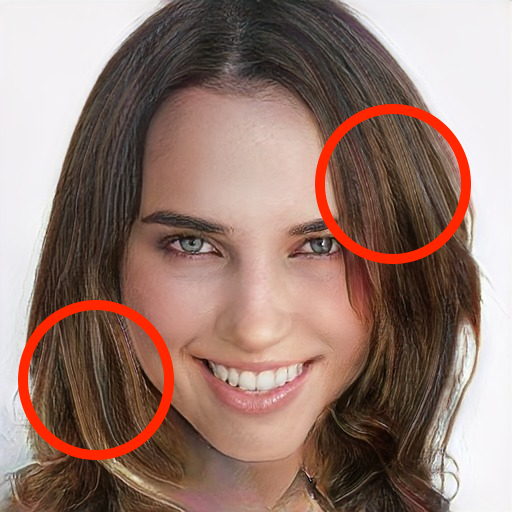
Long hair often looks exaggerated straight strands, as if someone smeared a bunch of acrylic with a palette knife or a huge brush.

If GAN was trained on faces, it is difficult for it to give rare structured objects in the background. In addition, GANs are trained on both standard and mirror versions of images, which leads to problems when modeling text that is usually displayed in only one orientation.

One of the reasons why the generated faces look believable is because all the training pictures were centered. This reduces the variability in the generation, for example, of the eyes and ears. On the other hand, the background can contain anything. It is too difficult to model, so the neural network ultimately replicates common background textures, rather than “real” background scenes.

GAN may have difficulty managing dependencies that are far away. For example, paired accessories, such as earrings, usually match in the data set, but not in the created images. The eyes in these photographs usually look in the same direction and usually in the same color, and the generated faces often suffer from strabismus and heterochromia. Asymmetry often occurs on ears of different heights or sizes.
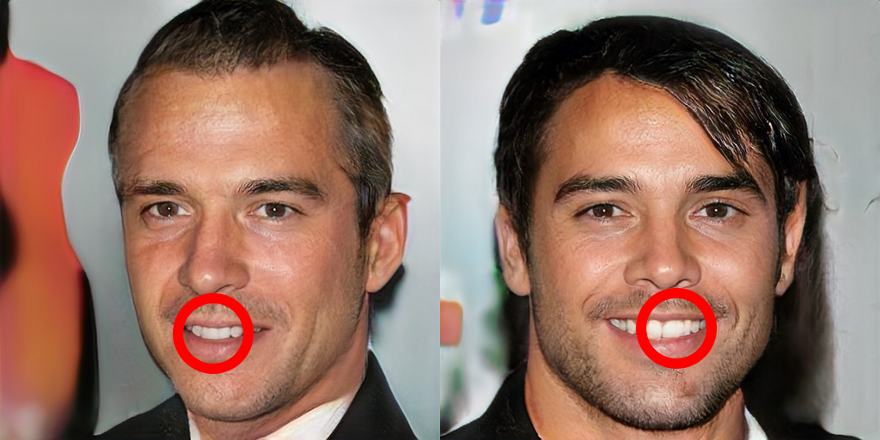
GANs can assemble a common scene, but are currently experiencing difficulties with semi-regular repetitive details, such as teeth. Sometimes GAN produces skewed teeth, stretches or compresses individual teeth in strange ways. Historically, this problem has manifested itself in other areas, such as the synthesis of textures with bricks-like images.

This is one of the fastest ways to recognize fake image. As a rule, GAN collects hair into lumps, creates random bunches around shoulders and throws thick lochmas on the forehead. These hairstyles are very variable and detailed, which makes them one of the most difficult objects for realistic GAN generation. Foreign objects can sometimes turn into hair textures.
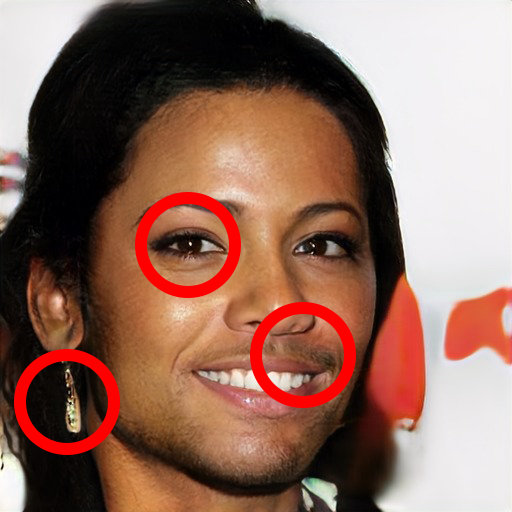
This GAN was trained on a CelebA kit with 200,000 images of 10,000 celebrities. In this set, I have not met anyone with facial hair, earrings and makeup at the same time; but GAN regularly mixes typical attributes of different genders. In general, I think this is due to the fact that the GAN does not always get an idea of the opposite binary categories that are accepted in human society (in this case, “man versus woman”).
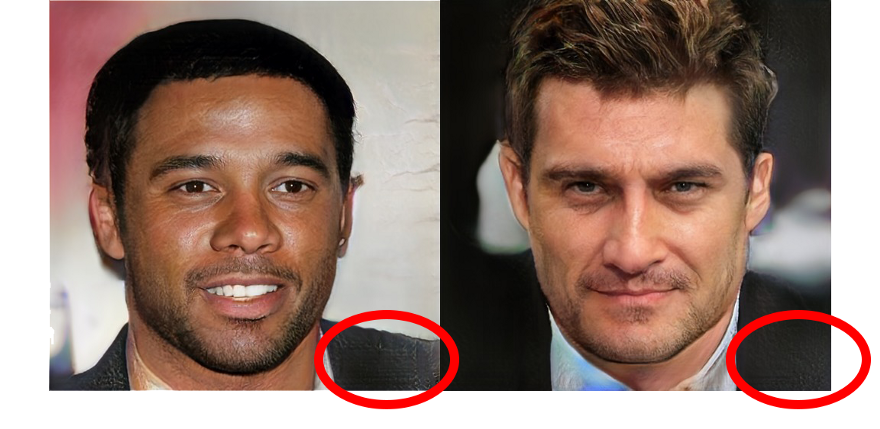
Some areas, instead of monochrome background, can receive semi-regular noise with horizontal or vertical stripes. In the cases above, the network is probably trying to imitate the texture of the fabric. Older GANs generate much more noticeable noise, which is usually described as chess artifacts .

Some areas with a light solid fill get a multi-color flare: these are collars, necks and white eyes (not shown here).
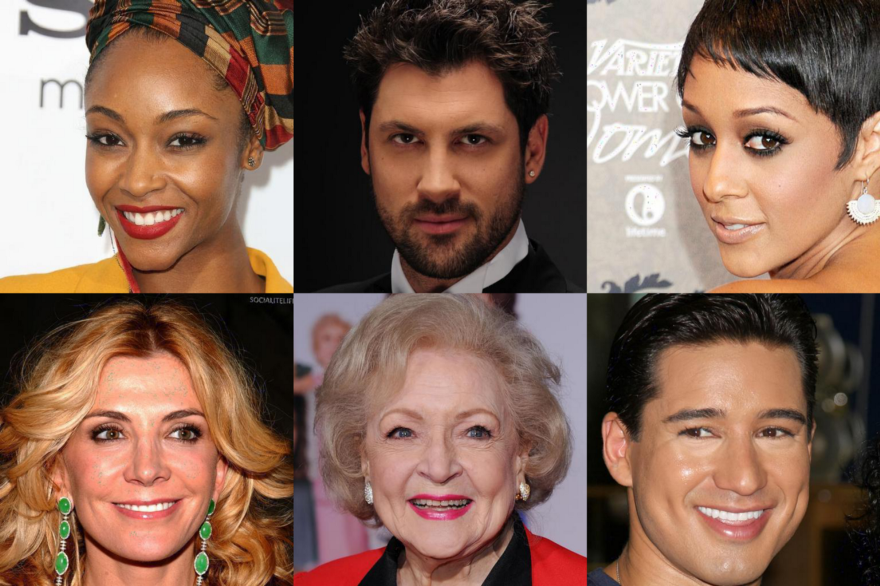
Pay attention to a clear background, text, paired earrings, teeth of the same size, detailed hairstyles. Knowing all the tricks of GAN, try to play the game and check how you distinguish real faces from fake ones. Note: some problems with the Start button .
The first images of the GAN were easy to identify. Look at these 2014 faces .

“Teaching without a teacher with deep convolutional generative competitive networks” (2014), Radford and others. Also known as DCGAN
But the last generated faces from October 2017 are already harder to identify.

“Progressive cultivation of GANs to improve quality, stability, and diversity” (2017), Karras et al. Also known as PGAN or ProGAN.
Here are some signs of the images that GAN generated. Focus on faces, because they are a common testing ground for researchers, and many of the most noticeable artifacts appear in other types of images.
Straight hair looks like dye

Long hair often looks exaggerated straight strands, as if someone smeared a bunch of acrylic with a palette knife or a huge brush.
The text can not be decrypted

If GAN was trained on faces, it is difficult for it to give rare structured objects in the background. In addition, GANs are trained on both standard and mirror versions of images, which leads to problems when modeling text that is usually displayed in only one orientation.
Surreal background

One of the reasons why the generated faces look believable is because all the training pictures were centered. This reduces the variability in the generation, for example, of the eyes and ears. On the other hand, the background can contain anything. It is too difficult to model, so the neural network ultimately replicates common background textures, rather than “real” background scenes.
Asymmetry

GAN may have difficulty managing dependencies that are far away. For example, paired accessories, such as earrings, usually match in the data set, but not in the created images. The eyes in these photographs usually look in the same direction and usually in the same color, and the generated faces often suffer from strabismus and heterochromia. Asymmetry often occurs on ears of different heights or sizes.
Strange teeth

GANs can assemble a common scene, but are currently experiencing difficulties with semi-regular repetitive details, such as teeth. Sometimes GAN produces skewed teeth, stretches or compresses individual teeth in strange ways. Historically, this problem has manifested itself in other areas, such as the synthesis of textures with bricks-like images.
Chaotic hair

This is one of the fastest ways to recognize fake image. As a rule, GAN collects hair into lumps, creates random bunches around shoulders and throws thick lochmas on the forehead. These hairstyles are very variable and detailed, which makes them one of the most difficult objects for realistic GAN generation. Foreign objects can sometimes turn into hair textures.
Incomprehensible gender

This GAN was trained on a CelebA kit with 200,000 images of 10,000 celebrities. In this set, I have not met anyone with facial hair, earrings and makeup at the same time; but GAN regularly mixes typical attributes of different genders. In general, I think this is due to the fact that the GAN does not always get an idea of the opposite binary categories that are accepted in human society (in this case, “man versus woman”).
Semi-regular noise

Some areas, instead of monochrome background, can receive semi-regular noise with horizontal or vertical stripes. In the cases above, the network is probably trying to imitate the texture of the fabric. Older GANs generate much more noticeable noise, which is usually described as chess artifacts .
Rainbow light

Some areas with a light solid fill get a multi-color flare: these are collars, necks and white eyes (not shown here).
Real image examples

Pay attention to a clear background, text, paired earrings, teeth of the same size, detailed hairstyles. Knowing all the tricks of GAN, try to play the game and check how you distinguish real faces from fake ones. Note: some problems with the Start button .
